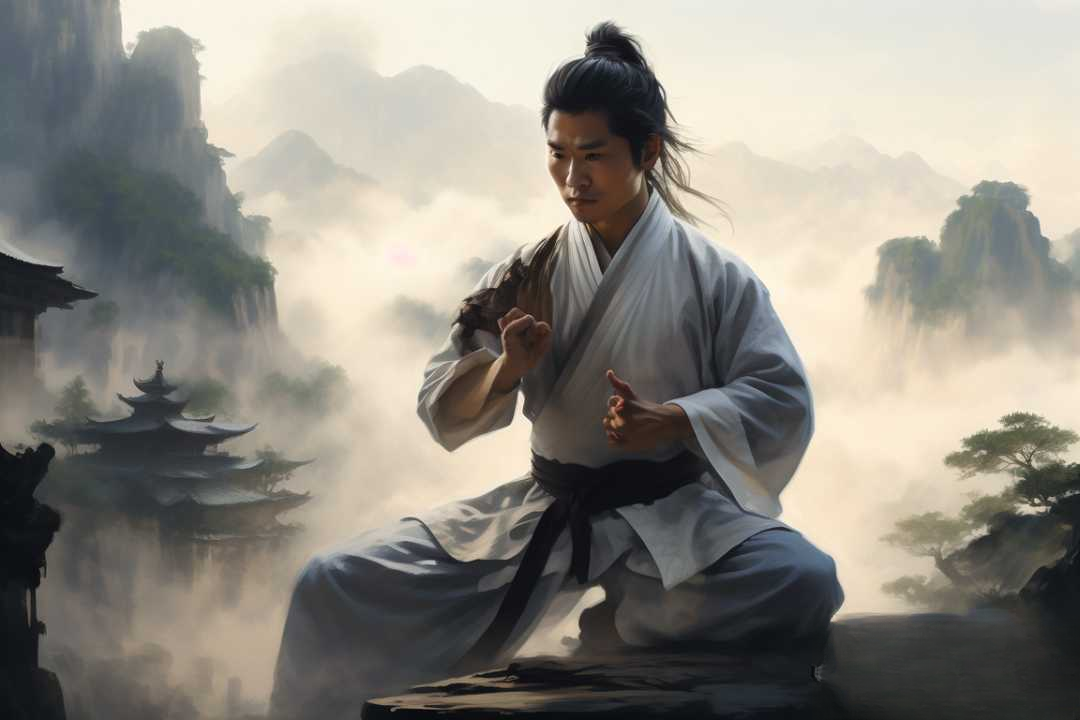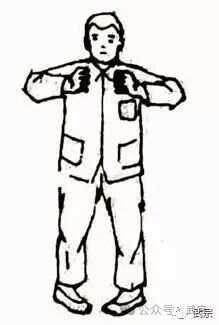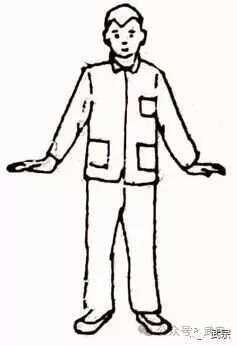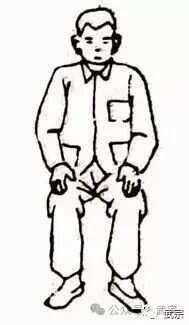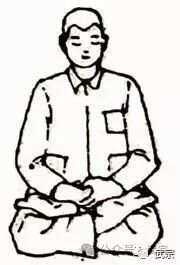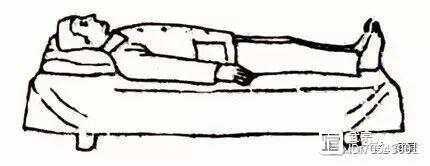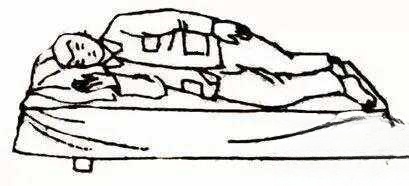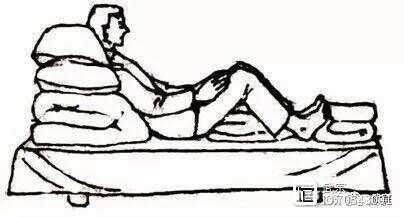Strengthening and curing diseases by walking, standing, sitting and lying down
CEditor Posted by 2024-05-28 08:32:56
Health-preserving ex
Open up the world with martial arts·There is no wise man and no martial artist is a coward In the method of practicing Qigong, posture is a very important part. If the posture is wrong, the progress will be affected; if the posture is correct, the practice will be more natural. Let’s talk about the four postures of walking, standing, sitting, and lying: 1. Line format The slow walking methods in martial arts such as Tai Chi, Liuhe Bafa, and Ruyi Quan are all considered walking skills. The key is to keep your chest up, your back straight, your shoulders relaxed, your elbows drooped, your head upright, your waist relaxed, and walk slower. 2. Standing type The posture of standing Qigong is similar to that of walking Qigong. You also need to hold your chest up, your back straight, and your shoulders relaxed. There is a specific way of standing called the "Sanyuan pose": the feet are shoulder-width apart, and the toes are slightly turned in, like a circle. Bend your knees slightly and keep your head straight, not tilted. Raise your hands as high as your shoulders, with your elbows slightly drooped, as if you were holding a tree. Spread your fingers slightly, palms facing each other, about a foot apart. Close your mouth and place your tongue against the roof of your mouth. (Figure 1)
1. Push down type The feet should be shoulder-width apart, with the toes pointed outward in a figure-eight shape. The two arms hang naturally, the fingers should be raised, the palms of the two palms should be pressed down, and each finger should be naturally straightened and slightly opened. The other postures are the same as Sanyuan Pose. When you first start practicing standing skills, this posture will be easier to master. 2. Bronze bell style The method of spreading your feet is the same as the above posture. The two arms are naturally separated to the left and right sides, and the angle of separation is between 30 and 40 degrees. The palms of the hands are facing downwards, with the fingertips pointing to the left and right sides. The thumb and index finger should be separated, the remaining three fingers should be slightly together, and the fingertips should be slightly raised. The legs should be straightened naturally, and the body should not be pushed backward or bent forward. The other postures are the same as Sanyuan Pose. You can refer to Figure 2.
3. Sitting posture 1. Flat sitting type Things you need to prepare include: an ordinary wooden square stool or chair, cushions and footboards. The specific posture is: sit naturally and upright, with your mouth and eyes slightly closed, and your tongue against the roof of your mouth. The top of your head should be upright and slightly forward and lowered. The chest should be held, the back should be straight, the shoulders should be lowered, and the elbows should be dropped. Place your palms gently between your legs. The waist should be straightened naturally and the abdomen should be relaxed. Sit smoothly with your knees bent at a 90-degree angle. Stand with your feet apart and the distance between your knees about two fist-widths apart. You can refer to Figure 3.
This flat sitting posture is the most commonly used posture in sitting exercises and can be used in most places. Unless the person is very weak and cannot sit for long periods of time, this position can generally be used by everyone else. If you are an old and infirm person, you can practice it alternately with lying exercises. 2. Sitting cross-legged Tools: The upper body is similar to a sitting position, the body is slightly tilted forward, and the two feet are crossed together. You can put your left foot down and your right foot up, or you can put your right foot down and your left foot up. It doesn't matter. Gently hold your two hands together and place them in front of your belly or on your legs; you can also place your left hand on top and your right hand on the bottom, stacked together and place them in front of your belly. You can practice single lotus at first, and then double lotus later. In double lotus, you first cross your left foot and then your right foot. Just like Figure 4.
Application: This posture is easy to calm down, because although the lower limbs are slightly tense, the tension in the upper body and head is easily eliminated. This posture is suitable for patients with neurasthenia. 4. Lying down 1. Supine position Utensils: wooden bed, with some straw or cotton pads on top (spring beds are not suitable). Posture: Lie flat on the bed, face up, your head should be straight, and the height of the pillow should be appropriate. The mouth and eyes are slightly closed, and the limbs are naturally straightened and placed on both sides. You can also bend your feet, put the soles of your feet on a stool, and raise your toes slightly or place them flat on the bed. Another posture is to straighten your legs naturally and place a cushion of appropriate height in the depression of your waist. Gently hold both hands together, either under the lower abdomen or on top of the legs. Another method is to press the heel of one foot into the depression of the ankle of the other foot (Jiehuo Point). Application: This position is suitable for frail patients and those with ascites. Pressing the Jiehuo point is effective for gastrointestinal diseases and high blood pressure. Just like Figure 5.
2. Side-lying type Utensils: Same as used in supine position. Position: Lie on your side in bed (either left or right), but it is generally recommended to lie on your right side to avoid compression of the heart. However, if the patient has gastric mucosal prolapse, he should choose to lie on his left side. Bend your body slightly into an arch shape, draw your head slightly toward your chest, rest your head steadily on the pillow, be careful not to press your ears too tightly, and gently close your mouth and eyes. The upper hand is placed naturally on the hip, and the lower hand is placed on the pillow next to the head, about an inch away from the head, or naturally straightened. The waist should be slightly bent, the lower leg should be naturally straightened, the upper leg should be bent at a 120-degree angle, and the upper knee should be naturally placed lightly on the lower knee, or moved slightly away. There is another posture, that is, the lower leg is bent at a 100-degree angle, the upper leg is stretched out naturally, slightly bent, and the lower knee presses against the upper knee. If you are thin, you can add a cushion between your legs to avoid pressure on your knees. There is also a posture called the Three Knots: Lie on your right side, place your right palm on your left elbow (Quchi point), your left palm on your left knee (Heding point), and put the sole of your left foot on your right knee (Heding point). hole). Application: This position is suitable for people with weak constitution or those who are not used to lying on their backs. When lying on your side, your abdominal muscles are easier to relax, making it easier to form abdominal breathing. The three-knot posture is particularly suitable for patients with gastroptosis and nephroptosis. Just like Figure 6.
3. Semi-horizontal Utensils: Set up a support frame on the bed, or use something like a quilt instead. Posture: Lie down naturally, like a position between sitting and lying down, with your knees bent and your hands on the bed or on your legs. Just like Figure 7.
Application: This posture is especially suitable for patients with heart disease, asthma or emphysema. |
